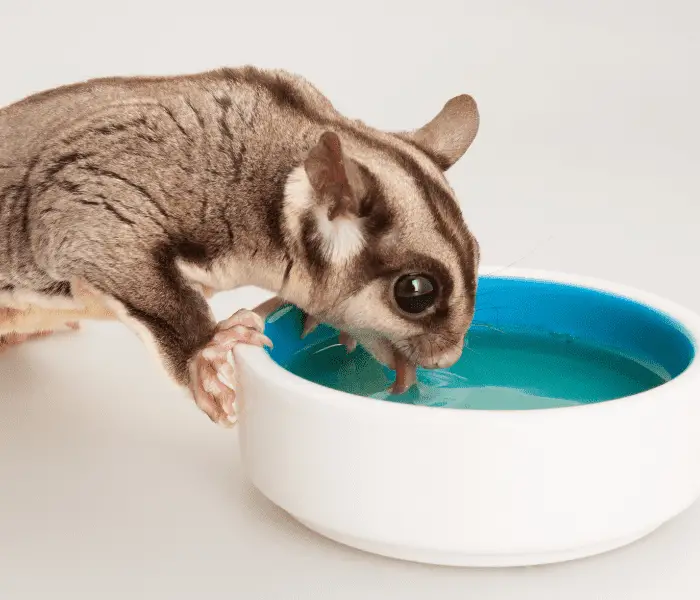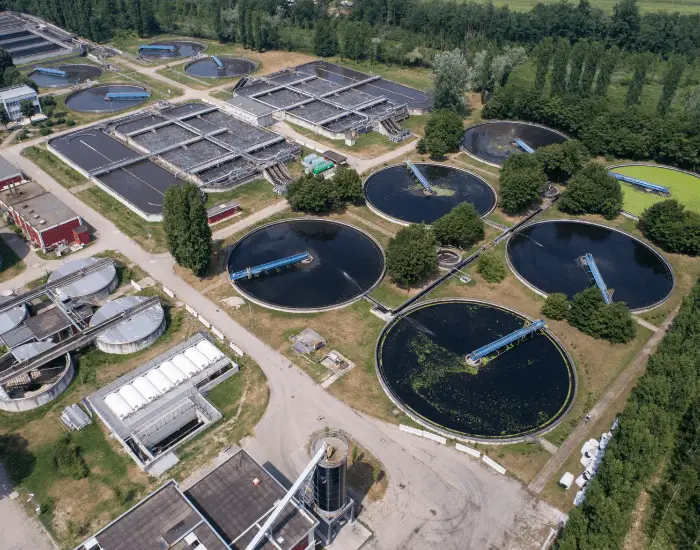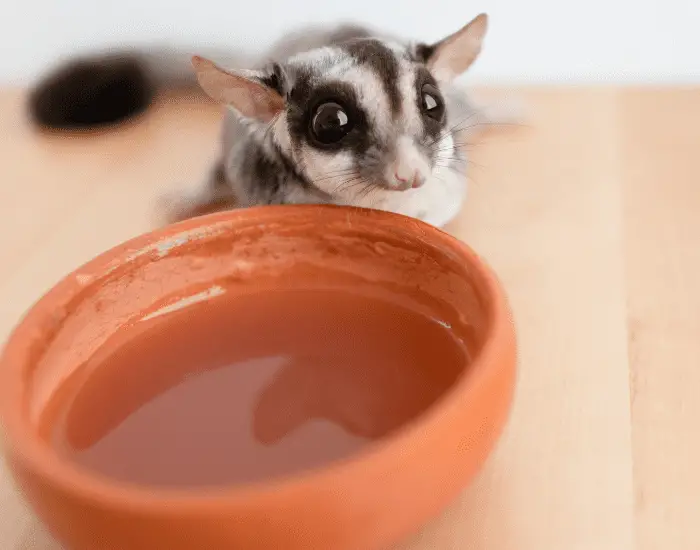
As with all living creatures, hydration is a necessary and crucial part of nutrition. This article aims to clarify what your sugar glider should drink.
Is It a Myth That Sugar Gliders Should Only Drink Bottled Water?
Bottled water is often preferred over tap water by suga gliders because of all the constituents of tap water and also the chemical additives in tap water compared to bottled water.
Inconsistencies in the level of tap water constituents, dissolved chemicals based on location and level of purification, and fluctuating chlorine levels can pose a severe risk to your sugar glider. For this reason, giving bottles or filtered water to you sugar glider is universally the safest recommendation for sugar glider owners.
While with most other pets in the home, such as dogs and cats, tap water is often an adequate source of hydration, and the larger animals can usually handle tap water quite well. Sugar gliders are a little more complicated in this regard. Special attention and precautions must be taken when considering your sugar gliders hydration needs.
How Does Tap Water Compare To The Water That Wild Sugar Gliders Will Drink?
Tap water is sourced from wells, springs, surface water, groundwater, and rainwater or, on rare occasions, from the ocean. Tap water is then processed and treated by methods such as reverse osmosis, thermal desalination, chlorination, filtration; and distributed throughout underground pipe networks.
Tap water has a variety of mineral constituents, such as calcium, copper, iron, magnesium, manganese, phosphorus, zinc, sodium, and potassium. Additionally, fluorine and chlorine are added to the water to kill harmful organisms during the treatment process.
Municipal water is often recycled from the water returning from homes and businesses through underground piping networks. The water is treated and purified with many chemicals. Although tap water is treated and processed to meet the drinking standards set by the Environmental Protection Agency, water can still be contaminated with pesticides, fertilizers, wastewater releases, and sewer overflow after treatment within the distribution system.

Spring water contains natural components from the spring the water was sourced from and is more alkaline than tap water. These components are typically calcium, magnesium, and trace amounts of sodium; however, this may vary slightly depending on the location.
Natural spring water would be the natural water source for sugar gliders in the wild.
Although tap water is not inherently poisonous and is treated to meet drinking standards, water from municipal sources often has spikes in the levels of fluoride, chlorine, and other chemical additives. These increased levels are generally not toxic to larger animals but commonly cause sudden death in sugar gliders.
Additionally, contamination from sewer overflows can cause bacteria such as Giardia to circulate within the water after treatment and cause gastrointestinal upset such as diarrhea which can be fatal for sugar gliders if not treated immediately.
How Can Sugar Glider Owners Tell If The Tap Water In Their Area Is Safe?
Although all tap water in the USA is processed and treated to meet drinking standards set by the Environmental Protection Agency, the level of purification may vary from municipality to municipality. The standard is that 80% of impurities be removed, but some municipalities remove 90% and even up to 98% of pollutants and contaminants.
To know for sure the quality of the water that runs through your taps, you would have to request a water analysis report from your local municipality.
Alternatively, you may opt to have your water tested by an independent, state-certified laboratory in your area.
What Water Parameters Should Sugar Glider Owners Check On Their Local Water Treatment Analysis Before Giving Tap Water To Their Gliders?
There are three types of water quality parameters – physical, chemical, and biological. Any of the three can be tested depending on what parameters are of concern, but all three are equally important in determining the overall quality of the water.
When considering tap water for your sugar glider, chemical is the most critical parameter of the three. Chemical water analysis refers to the characteristics of the water, level of dissolved minerals, toxicity, and acidity.
The water parameters you should pay special attention to in your tap water that will affect your sugar glider are the pH, dissolved minerals such as chlorine and fluorine, and biological organisms such as blue-green algae and bacteria.
The acceptable level of chlorine and fluorine in tap water is 4 milligrams per liter.
The pH of tap water varies but is typically about 7.5.
Biological material is destroyed by chlorination during water treatment and distribution.
What Kind Of Water Is Ideal For Giving Your Sugar Glider To Drink?
In the wild, sugar gliders are not frequent water drinkers, as they get most of their water from tree sap and the fruit they eat, which makes up a large percentage of their diet. When they consume water, it is usually spring water in tiny quantities.
As household pets, sugar gliders are typically on a pellet-based diet, with fruits being fed in moderation. They can go up to twelve hours without water, but it should always be readily available for your sugar glider.
Ideally, you should give your sugar glider natural spring water and bottled alkaline water (pH 8 or 9), or you may give your sugar glider tap water if you have a filtration device in your home. This will filter out the potentially harmful chemicals and render the water safe for your sugar glider to drink.
You should never give your sugar glider distilled water, as the pH of 5.7-6.9 is too acidic for consumption.
Is It Expensive To Maintain A Sugar Glider’s Water Need?
As previously stated, sugar gliders are not frequent water drinkers and can go for many hours without having anything to drink.
One gallon (3.79 liters) of bottled water can easily last a few weeks, so the running cost of purchasing bottled water is limited to a little over a dollar (USD) every few weeks or even longer.
A home filtration system may cost $50 to $9000, depending on the type the homeowner chooses. However, all are sufficient to render the water safe for your sugar glider and yourself. These home filtration systems do require maintenance and servicing as per the manufacturer’s guidelines. Still, they are a good investment for not only your precious sugar glider but also for all members of the home.
Some refrigeration units have built-in filtration devices which automatically filter all water from the water unit. You may use this water from your sugar glider. Remember to frequently replace the water and clean out or replace the filter often as instructed in the manufacturer’s manual.
Pet Vet Tip: For the ultimate sugar glider budget guide, have a look at this article.
Final Thoughts
Although it might be possible for your sugar glider to consume ordinary tap water, it is ideal to give bottled water or to use a purification machine to purify tap water in your home. Municipal tap water has a standard to ensure safe drinking water; however, the chlorine and fluorine might increase slightly and poison your sugar glider.
Rather err on the side of caution at all times and provide the safest drinking water option for your sugar glider.

References
- Banks, R., 2013. Exotic small mammal care and husbandry. Hoboken: John Wiley, pp.81 – 92. https://onlinelibrary.wiley.com/doi/book/10.1002/9781119265405
- Carriveau, L.A. (2010) Sugar Gliders Wellness (Proceedings), DVM 360. Available at: https://www.dvm360.com/view/sugar-gliders-wellness-proceedings (Accessed: November 27, 2022).
- Dierenfeld, E., 2009. Feeding Behavior and Nutrition of the Sugar Glider (Petaurus breviceps). Veterinary Clinics of North America: Exotic Animal Practice, 12(2), pp.209-215.
- Drinking water frequently asked questions (faqs) (2020) Centers for Disease Control and Prevention. Centers for Disease Control and Prevention. Available at: https://www.cdc.gov/healthywater/drinking/drinking-water-faq.html (Accessed: November 27, 2022).
- Smith, A., 1982. Diet and Feeding Strategies of the Marsupial Sugar Glider in Temperate Australia. The Journal of Animal Ecology, 51(1), p.149.

